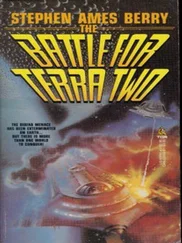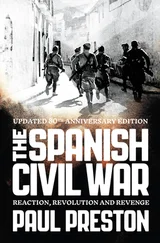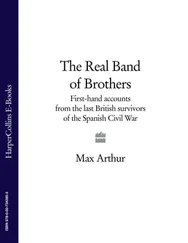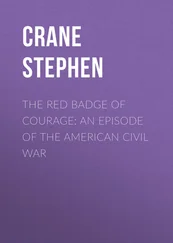PRE-WAR RIGHT
Confederación Española de Derechas Autonomas(CEDA)
Acción Popular (AP)
Juventudes del Acción Popular (JAP)
Popular Action Youth
Partido Agrario (mainly Castilian landowners) CEDA, the Spanish Confederation of the Autonomous Right was a political alliance of right-wing Catholic parties, brought together under Gil Robles. It won the election of 1933, but its failure to win in February 1936 led to its rapid disintegration. JAP, its youth movement, went over to the Falange en masse during the spring of 1936.
Partido Republicano Radical(PRR)
Led by Alejandro Lerroux, a former revolutionary and anti-cleric, who swung to the right, the party was reputed to be the most corrupt of the period. In 1934 its liberal wing broke away under Diego Martínez Barrio to form Unión Republicana.
Derecha Liberal Republicana(DLR)
The Republican Liberal Right party of conservatives, such as Miguel Maura and Niceto Alcala Zamora, who had turned against the monarchy.
Lliga Catalana (LC)
The Catalan League was the Catalan nationalist party of the grande bourgeoisie , and represented the dissatisfaction of Barcelona industrialists with the centralism and taxation of Madrid.
REPUBLICAN
POPULAR FRONT PARTIES AND AFFILIATED ORGANIZATIONS
Unión Republicana(UR)
Martínez Barrio’s Republican Union was a centre-right party that broke away from Lerroux’s Radicals (who had formed the government of 1934–5 with CEDA participation). It thus represented the right wing of the Popular Front alliance assembled for the February 1936 elections. Its support came from the liberal professions and businessmen.
Izquierda Republicana(IR)
Azaña’s Republican Left party came from the fusion in April 1934 of his Republican Action, Casares Quiroga’s Galician autonomy party and the radical socialists.
Esquerra Republicana de Catalunya
Lluís Companys’s Republican Left Party of Catalonia was the Catalan counterpart to Azaña’s Izquierda Republicana.
Partido Socialista Obrera de España(PSOE)
The Spanish Socialist Workers’ Party
Unión General de Trabajadores (UGT). The General Union of Workers was the trade union affiliated to the socialist party.
Juventudes Socialistas (JJSS). The Socialist Youth amalgamated with the Communist Youth in the spring of 1936 to form the United Socialist Youth, but then the whole organization was brought under communist control by its leader, Santiago Carrillo, when the civil war began.
Partido Comunista de España(PCE)
The Spanish Communist Party
Juventudes Socialistas Unificadas (JSU), the United Socialist Youth, Partido Socialista Unificado de Cataluña (PSUC). The United Socialist Party of Catalonia was an amalgamation of Catalan socialist parties in the spring of 1936, which was completely taken over by the communists.
Partido Obrero de Unificación Marxista(POUM)
The Worker’s Party of Marxist Unification was led by Andreu Nin (Trotsky’s former secretary from whom he was now disassociated) and Joaquin Maurin. The party was not ‘Trotskyist’ as the Stalinists claimed, but had more in common with the left opposition in the Soviet Union.
ALLIES OF THE POPULAR FRONT
The Libertarian Movement(anarcho-syndicalist and anarchist) Confederación Nacional de Trabajo (CNT). The National Confederation of Labour was the anarcho-syndicalist trade union.
Federación Anarquista Ibérica (FAI)
Federación Ibérica de Juventudes Libertarias (FIJL) Mujeres Libres (the anarcho-feminist organization)
BASQUES
Partido Nacionalista Vasca (PNV)
The Basque Nationalist Party of conservative Christian Democrats. Acción Nacionalista Vasca (ANV)
Basque Nationalist Action was a much smaller social democrat splinter from the PNV.
Solidaridad de Trabajadores Vascos (STV)
Solidarity of Basque Workers. The Basque nationalist Catholic trade union.
AC
Acció Catalana
AP
Acción Popular
AR
Acción Republicana
CEDA
Confederación Española de Derechas Autónomas
CNT
Confederación Nacional de Trabajo–anarcho-syndicalist trade union
CTV
Corpo Truppe Volontarie–Italian fascist expeditionary corps
DEDIDE
Departamento Especial de Información del Estado
DLR
Derecha Liberal Republicana
FAI
Federación Anarquista Ibérica–anarchist purists
FET
Falange Española Tradicionalista y de las
FRG
Federación Republicana Gallega
GRU
Glavnoye Razvedyvatelnoye Upravleni–(Soviet military intelligence)
JAP
Juventudes de Acción Popular–Popular Action Youth
JONS
Juntas de Ofensiva Nacional Sindicalista
NKVD
Narodnyi Kommissariat Vnutrennich Del–People’s Commissariat for Internal Affairs (Soviet secret police)
ORGA
Organización Republicana Gallega Autónoma
OVRA
Opera Voluntaria de Repressione Antifascista–(Italian Fascist secret police)
PCE
Partido Comunista de España–Spanish Communist Party
PNV
Partido Nacionalista Vasco–Basque Nationalist Party
POUM
Partido Obrero de Unificación Marxista–Workers’ Party of Marxist Unification
PRR
Partido Republicano Radical
PRRS
Partido Republicano Radical-Socialista
PSOE
Partido Socialista Obrero Español–Socialist Party
PSUC
Partido Socialista Unificat de Catalunya–Catalan Communist Party
RENFE
Red Nacional de Ferrocarriles Españoles–Spanish rail network
SIEP
Servicio de Información Especial Periférico
SIM
Servcio de Inteligencia Militar–republican counterintelligence
SIPM
Servcio de Información y Policía Militar
UGT
Unión General de Trabajadores
UME
Unión Militar Española
UMRA
Unión Militar Republicana Antifascista
PART ONE
Old Spain and the Second Republic
Their Most Catholic Majesties
On an unsurfaced road in Andalucia or Estremadura, one of the first automobiles in Spain has broken down. In the photograph a young man grasps the steering wheel. He is not very good-looking, due to a large nose and enormous ears. His brilliantined hair is parted in two and he has a moustache. The driver of the car is King Alfonso XIII.
On either side, men are pushing hard at the mudguards. Their faces are burned a deep brown by the sun and they are poorly dressed, without collars or ties. They are making a big effort. In the background, three or four figures dressed in suits and hats observe the goings-on. A rider, perhaps a local landowner, has reined in his horse. On the right, a landau drawn by two horses, the reins held by a uniformed coachman, waits ready to rescue the monarch if the car’s engine fails to restart. The caption announces that the king’s greatest wish is to maintain ‘direct contact with his people’. Few images better represented the extremes of the social and economic contrasts of Spain in the early part of the twentieth century. But perhaps the most striking aspect of the photograph is the way the peasants and the king must have seemed like foreigners to each other in their own country.
Spain, with its stern tradition of rule from Madrid, was becoming increasingly turbulent at that time, both in the countryside and in the big cities. So not even the tidy-minded could say later that the Spanish Civil War simply began in July 1936 with the rising of the ‘nationalist’ generals against the republican government. That event signalled the greatest clash in the conflict of forces which had dominated Spanish history. One of those antagonisms was evidently between class interests, but the other two were no less important: authoritarian rule against libertarian instinct and central government against regionalist aspirations.
Читать дальше












